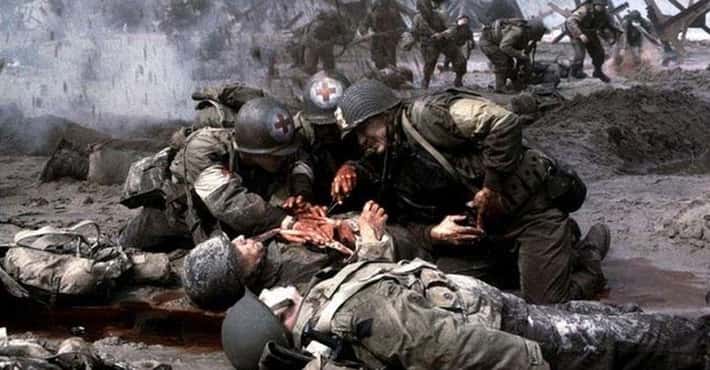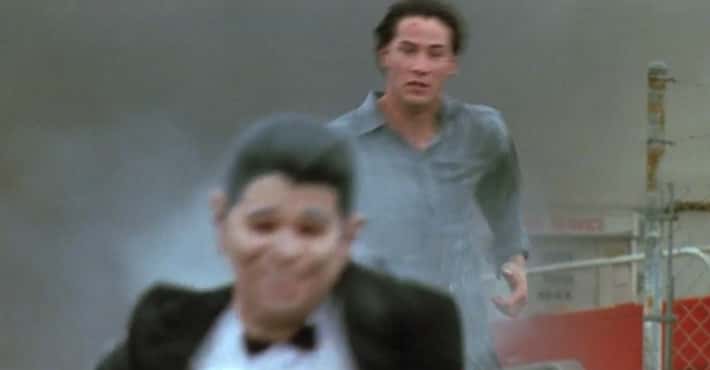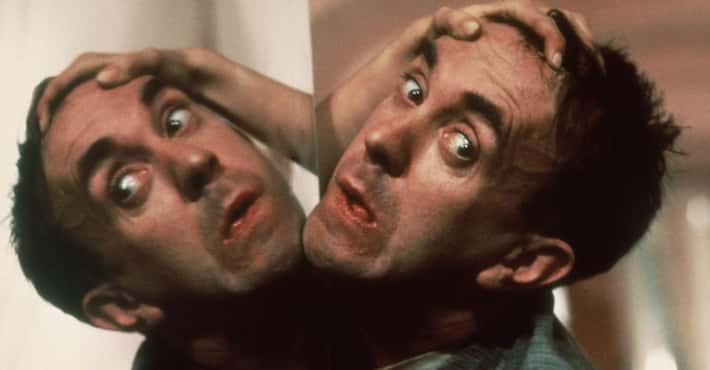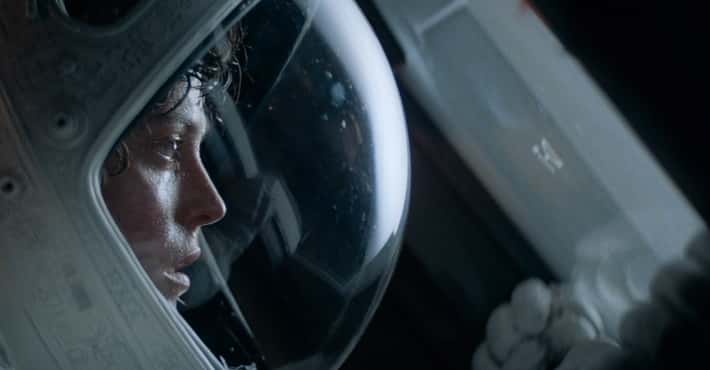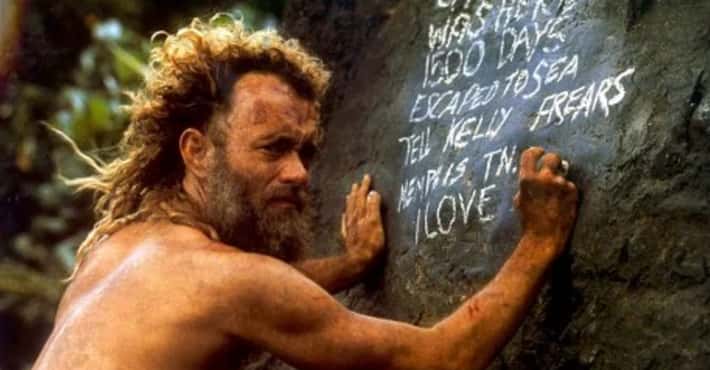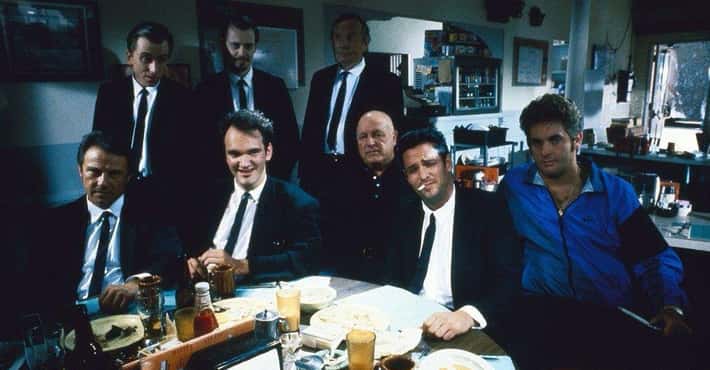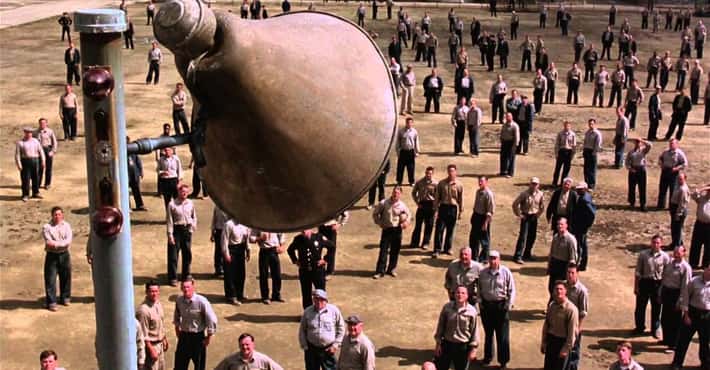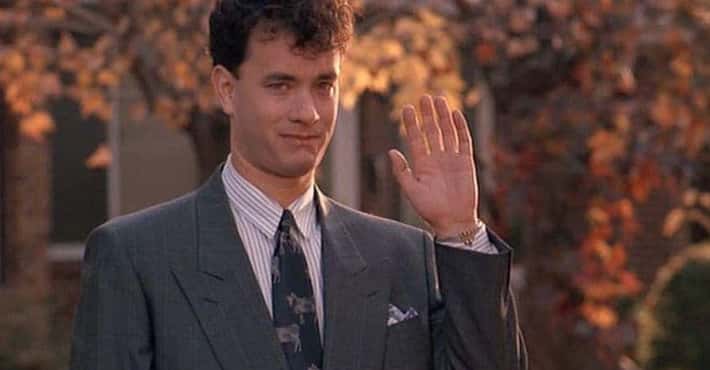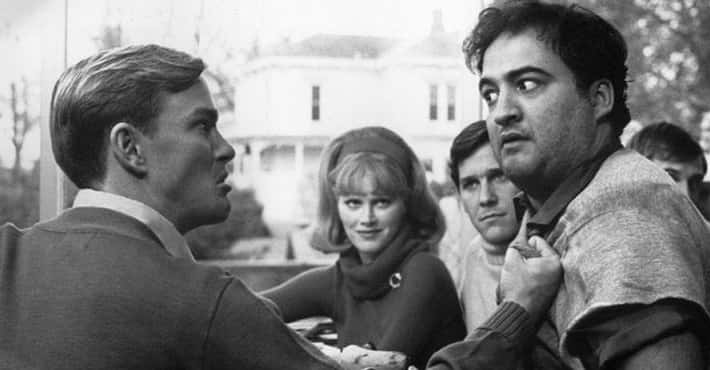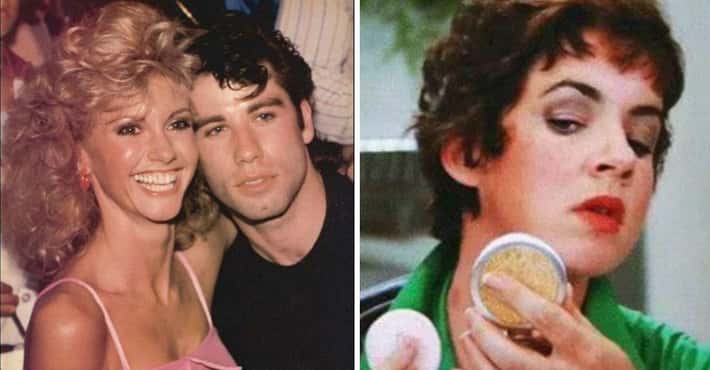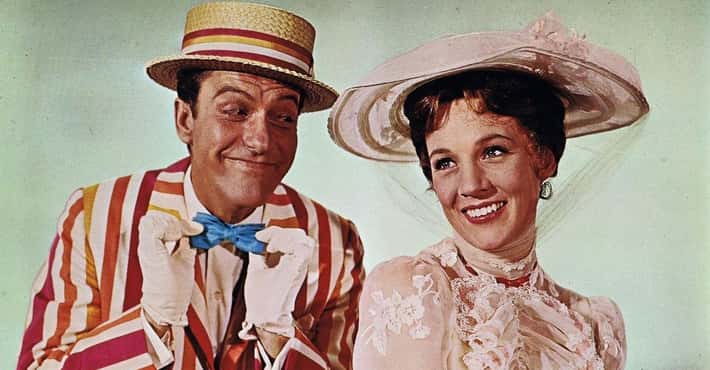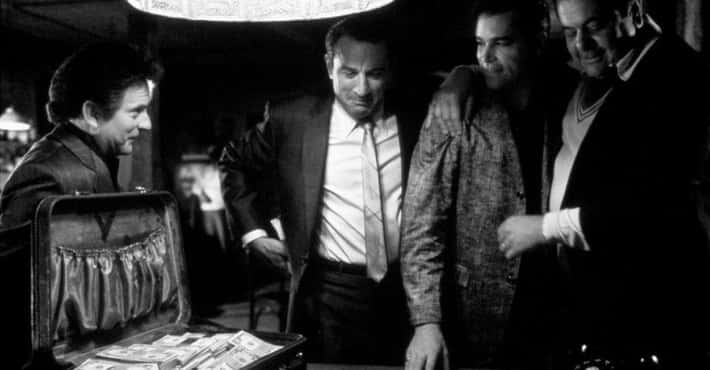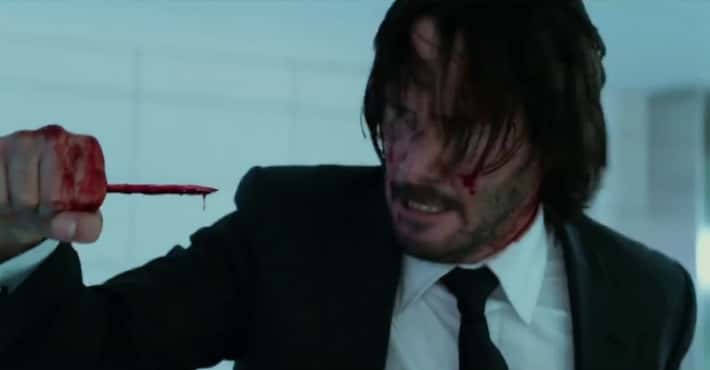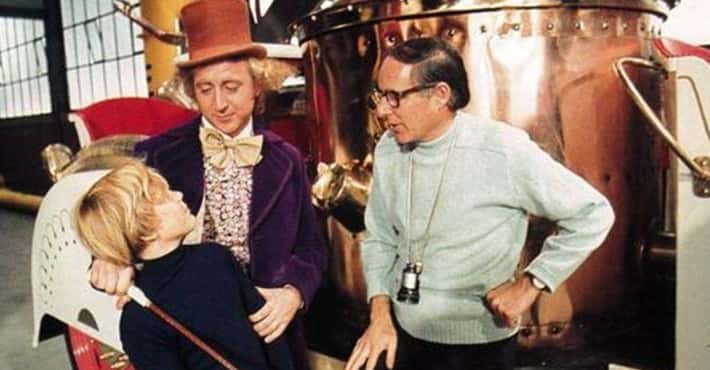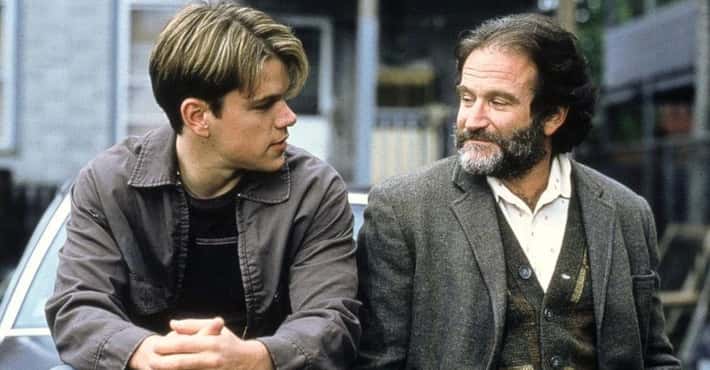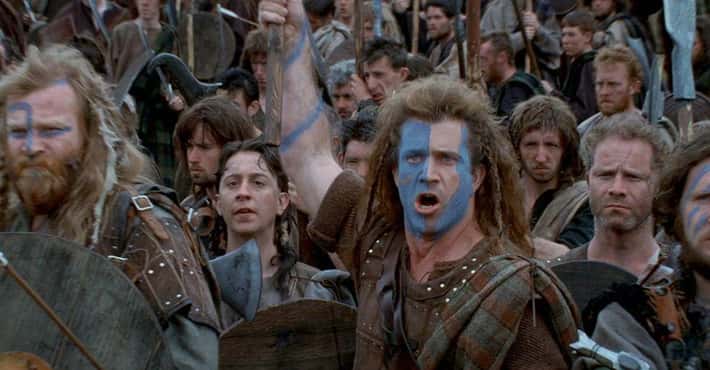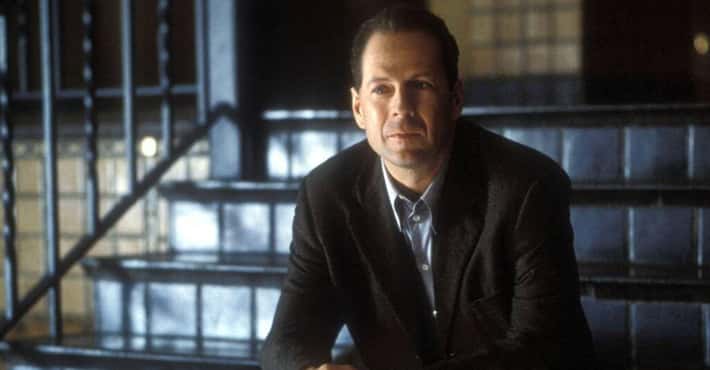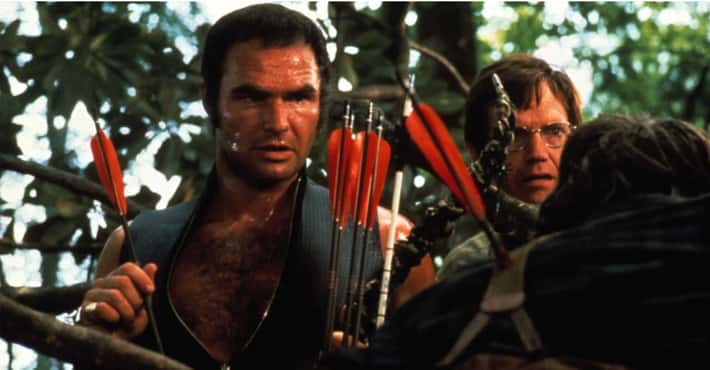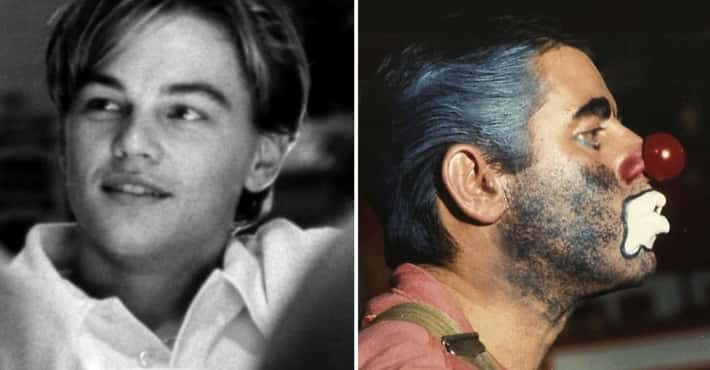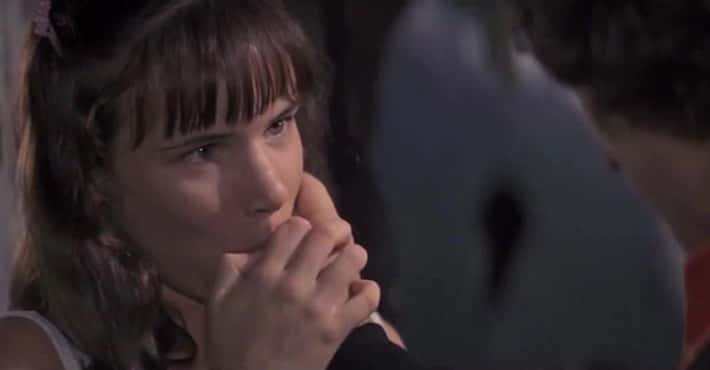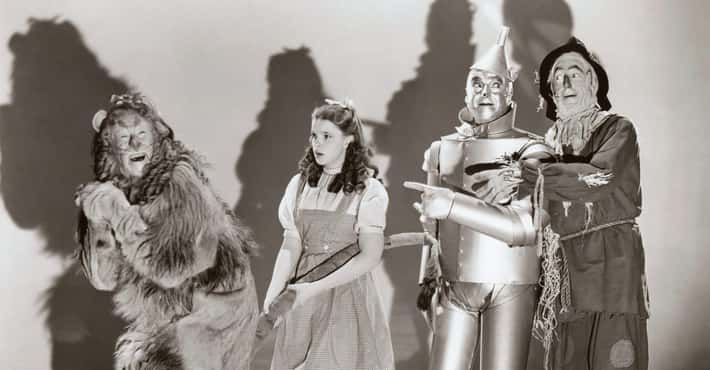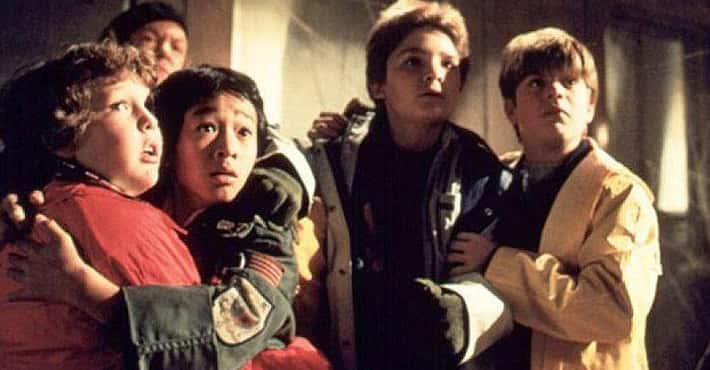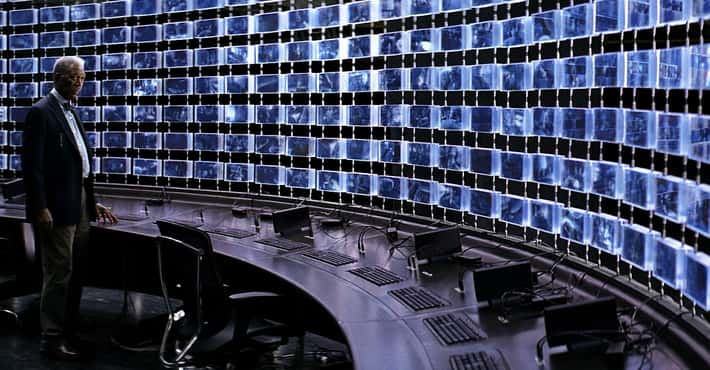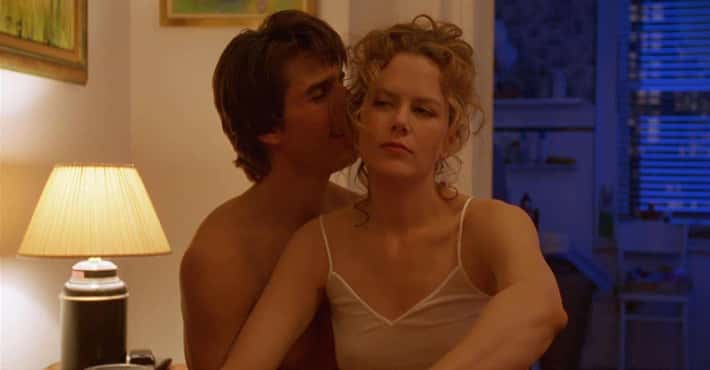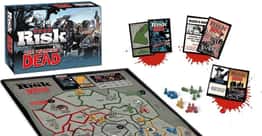
Behind-The-Scenes Stories From The Making Of 'Full Metal Jacket'
Copy link
Vote up the most interesting behind-the-scenes stories from this Vietnam War classic.
- Photo: Warner Bros.139 VOTES
Vincent D’Onofrio Gained A Record 70 Pounds - But The Weight Caused Him To Tear Ligaments In His Legs On The Film's Obstacle Course
Prior to making Full Metal Jacket, Vincent D'Onofrio was an unknown actor with just a couple of bit parts on his filmography. He was an attractive, athletic, and fit young man. Kubrick cast D'Onofrio for the role of Private Leonard "Gomer Pyle" Lawrence - an overweight and clumsy Marine recruit who would be the central character in one of the film's most disturbing scenes.
In order to become Pyle for his big-screen debut, the actor put on 70 pounds. D'Onofrio's physical transformation set the record for the most weight gained by an actor for a movie role.
''It changed my life,'' he said. ''Women didn`t look at me; most of the time I was looking at their backs as they were running away. People used to say things to me twice, because they thought I was stupid.''
The extra weight also put a strain on D'Onofrio's bloated 280-pound body. During one of the boot camp obstacle course scenes, the actor injured his left knee so badly that he would later require major surgery.
It took D'Onofrio one year to take off the weight. But the actor knows that it was totally worth it in the end:
I gained weight everywhere. My thighs were tremendous, my arms were tremendous, even my nose was fat. I had a tough time tying my shoelaces, but this was the only way I could play Leonard, because I had to be weak-minded in the same way. Because of the weight and the fact that he was totally out of his element, Leonard's mind became weak.
- Photo: Warner Bros.231 VOTES
The Beckton Gasworks Set Was Reportedly A Toxic Environmental Disaster
The meticulous Kubrick spent several months making the abandoned Beckton gasworks in England, which was located on the Thames River, look like the war-torn city of Hue, Vietnam. The director and his crew blew up buildings on the property and tore down others. The gasworks had previously been scheduled for demolition.
Kubrick based the aesthetics of Hue on an old picture he had of the city from 1969. The movie's battle scenes took place at Beckton. Kubrick said of the demolition process:
We had a demolition team in there for a week blowing up buildings, and the art director spent about six weeks with a guy with a wrecking ball and chain, knocking holes in the corners of things and really getting interesting ruins - which no amount of money would have allowed you to build.
Modine wrote in his diary that the Beckton gasworks was not a safe place to film and called the set an "environmental disaster." The asbestos and poisonous vapors were reportedly toxic enough to make people sick.
Kubrick was just happy to find what he thought was an ideal location.
"It looks absolutely perfect, I think," the director said of the Beckton set. "There might be some other place in the world like it, but I'd hate to have to look for it. I think even if we had gone to Hue, we couldn't have created that look. I know we couldn't have."
- Photo: Warner Bros.332 VOTES
The Film Was Shot In Reverse Order: Vietnam First, Boot Camp Second
Full Metal Jacket is divided into two very distinct parts. The first half of the movie features the Marine platoon as they go through the rigorous boot camp training under Hartman. The second half of the movie is the platoon stationed in Vietnam. However, Kubrick decided to film the Vietnam scenes first.
Modine, who played Private Joker, isn't exactly sure why Kubrick opted to film the Vietnam scenes first. He thinks it most likely had something to do with the timing of the Beckton gasworks demolition:
I was never certain why we shot the film backwards, but I knew we had to be out of Beckton gasworks by a certain date because it was scheduled for demolition. It would have been a completely different film if we'd gone to the jungles and shot Vietnam that way. The street fighting, I think, is one of the things that makes the film timeless. It looks like Afghanistan or Iraq today.
- Photo: Warner Bros.452 VOTES
Ermey’s Audition Tape Involved Screaming Insults While Being Pelted With Oranges And Tennis Balls
How exactly did Ermey go about convincing Kubrick to cast him as Hartman? The veteran's plan required an old-fashioned switcheroo that had worked twice before in Apocalypse Now and The Boys in Company C.
Ermey worked his way onto Kubrick's set as a technical director. He then went about convincing Kubrick that he should actually be cast as the drill sergeant in the movie, despite the role already being claimed by Tim Colceri.
The veteran made an audition tape that depicted him as the abusive drill sergeant, yelling insults as tennis balls and oranges flew at his head.
Kubrick heard these tapes and replaced Colceri, who had just spent weeks learning the 28 pages of difficult dialogue. Colceri did get a smaller part in the movie as the helicopter gunner who yelled out, "Get some," while brutally gunning down Vietnamese noncombatants.
Ermey rehearsed the same way he earned the part. The actor had Kubrick's assistant Leon Vitali throw tennis balls at him while he prepared for his scenes.
"I had to catch the ball and throw it back to Leon as fast as possible and say the lines as fast as possible," Ermey revealed. "If I were to slur a word, drop a word, or slow down, I had to start over. I had to do it 20 times without a mistake. Leon was my drill instructor."
- Photo: Warner Bros.541 VOTES
Kubrick Couldn't Figure Out The Ending, And Ended Up Going With A Suggestion By Modine
According to Modine, the original ending of Full Metal Jacket featured the demise of his character, Private Joker. The actor and director often discussed the film's ending, which Kubrick thought was actually too predictable.
Modine suggested that Joker should survive Vietnam, which would actually be a worse fate for a man than perishing in war. Modine explained the emotional pain his character would have to deal with for the rest of his life:
Joker should live because that is the real horror of war - spending the rest of your life with that experience of his drill inspector getting shot and killed in a toilet, that the guy he was helping get through boot camp would put an M14 in his mouth and blow his brains out, that the guy that he went through boot camp with would die in his arms, and that he would come to Vietnam and stand over this young Vietnamese girl begging him to end her life - I knew that it was the right ending.
You never escape that. That's something you carry with you the rest of your life. I meet Marines and Army soldiers that were in Vietnam and they tell me how much they love Full Metal Jacket and that we got it right. It wasn't the jungle fighting. What Stanley was able to get from his actors was that emotional reality of having to stand over a young girl and take her life. That’s what we got right. That there's nothing fun or romantic about it. That it's horrible.
- Photo: Unknown / Wikimedia Commons / Public Domain640 VOTES
One Of The Screenwriters Couldn’t Attend The Oscars Because He Was Being Prosecuted For Stealing 10,000 Library Books
Gustav (Gus) Hasford served in Vietnam as a Marine and war correspondent. Following the conflict, he became a journalist and wrote the semi-autobiographical novel The Short-Timers, which became the source material for Full Metal Jacket. Hasford also co-wrote the screenplay along with Kubrick and Michael Herr.
Full Metal Jacket earned one Academy Award nomination for best adapted screenplay (it lost to The Last Emperor). In 1988, right before the Oscar ceremony, campus police from California Polytechnic State University arrested Hasford after discovering 10,000 library books inside his storage locker.
Hasford was subsequently charged with grand theft for swiping over 1,000 books from 63 different libraries. The estimated worth of the library books was $20,000. Several rare books were found in his possession.
Hasford was able to negotiate a plea deal. He was sentenced to six months in jail and fined $1,000. The court decision also stipulated that Hasford had to return all the books to their rightful owners. The writer ultimately served three months of his sentence.
Even if Hasford had not been hauled in, he may have skipped the Oscar ceremony anyway. The writer had a combative relationship with Kubrick and was even banned from the set. He wanted full screenwriting credit and threatened the production with a lawsuit. He reportedly disguised himself as an extra in order to sneak onto the set.
- Photo: Warner Bros.732 VOTES
Typical Of Kubrick, The Film Went 21 Weeks Over Schedule
Kubrick had a reputation for being an obsessive perfectionist. He often made actors do scenes over and over again - often dozens of times, sometimes over 100 times - in order to achieve his creative vision.
He once made Sydney Pollack do hundreds of takes during an Eyes Wide Shut scene in which the actor simply had to walk across the room and answer the door. For the same film, Kubrick made Tom Cruise walk through a door 95 different times.
The production for Full Metal Jacket was only supposed to be 18 weeks. The filming instead lasted for 39 weeks.
Modine talked about what it was like to be on the set for such a prolonged period of time:
I described it as Gilligan’s Island. The ship set sail on what was supposed to be a three-hour tour and they end up trapped on this island. In our case, it was another of shooting, another day, another day. You begin to wonder what you have to do to complete this?
- Photo: Warner Bros.849 VOTES
Kubrick Did Not Want Modine To Leave The Set For The Birth Of His Son
Modine decided to keep a detailed diary and take a lot of photographs while making Full Metal Jacket. He published a book all about it in 2005 called Full Metal Jacket Diary.
According to Modine's book, while the film was in the middle of production, his wife was pregnant. There were complications, and she needed to have an emergency cesarean. When Modine found out about the surgery, he went to tell Kubrick about the emergency and that he needed to go to the hospital.
According to Modine, Kubrick responded:
What are you going to do? Are you going to stand in the operating room? You'll faint as soon as they cut her open! You'll see all that blood and you'll pass out. You're just going to be in the way of the doctors.
The argument grew heated. Modine pulled out a pocket knife and told Kubrick he would slice open his own hand so he would have to go to the hospital to be treated.
Kubrick finally backed down and let Modine off the set. But, he did tell the actor to get back as soon as possible.
- Photo: Warner Bros.930 VOTES
Production Was Shut Down For Three Months After Ermey Broke His Ribs In A Car Accident
Right in the middle of shooting Full Metal Jacket, Ermey suffered severe injuries from an automobile accident. According to Kubrick, the actor's car skidded off the road at 1 o'clock in the morning.
The director talked about how the Vietnam veteran managed to survive:
He broke all his ribs on one side, just tremendous injuries, and he probably would have died, except he was conscious and kept flashing his lights. A motorist stopped. It was in a place called Epping Forest, where the police are always finding bodies. Not the sort of place you get out of your car at 1:30 in the morning and go see why someone's flashing their lights.
The cast and crew were forced to shut down production entirely for three months. Ermey was out of commission for over four months.
- Photo: Warner Bros.1040 VOTES
R. Lee Ermey, A Former Drill Instructor In Vietnam, Improvised His Boot Camp Insults
R. Lee Ermey was a former Marine Corps drill instructor and Vietnam veteran. He was so experienced that he could make up his own clever, rapid-fire, devastating, boot-camp training put-downs. Kubrick said that about 50% of Ermey's improvisational dialogue worked its way into the final script.
Kubrick added that Ermey came up with about 150 pages of insults. However, the veteran was just repeating the things he learned during his time in the military.
"My main objective was basically to just play the drill instructor the way the drill instructor was and let the chips fall where they may," Ermey said. "You can ask any drill instructor who was down there in 1965 or 1966, that's exactly how the drill instructor's demeanor was. There were no punches pulled."
Even more impressive was that the green actor was an immediate natural. He usually only needed a few takes to get through each of his scenes, which was rare for a Kubrick actor.
"Lee Ermey, for instance, would spend every spare second with the dialogue coach, and he always knew his lines," said Kubrick. "I suppose Lee averaged eight or nine takes. He sometimes did it in three. Because he was prepared."
Ermey earned rave reviews for his work as the cruel drill instructor. He also received a Golden Globe nomination for best supporting actor. Ermey went on to have an impressive career as a character actor in Hollywood, amassing over 120 credits on his filmography.
- Photo: Warner Bros.1129 VOTES
A 3-Foot Pipe Full Of Pasta And Fake Blood Was Used To Create The Film’s Violent Gunshot Bursts
There's no doubt that the scene in which Pyle finally snaps and kills his oppressor, drill instructor Hartman, and then himself is one of the most memorable in the film. It's a graphic and difficult scene to watch.
In order to re-create the result of Pyle putting the rifle in his mouth and pulling the trigger, the crew needed to show his brains being blasted onto the white bathroom wall behind him. Actor Matthew Modine told Kubrick how director William Friedkin filmed a similar scene in To Live and Die in L.A. Kubrick and his team got a copy of the film and watched the scene repeatedly in slow motion.
Based on Friedkin's editing and gut-slinging method, Kubrick constructed a 3-foot pipe. The vessel tossed a combination of fake blood and pasta at the white wall behind D'Onofrio by using pressurized air. A simple edit in post-production made the tragic scene appear as realistic as possible.
- Photo: Warner Bros.1222 VOTES
The Actors Threatened A Mutiny
Modine's Full Metal Jacket Diary gives readers true insight on what occurred on a day-to-day basis on the set of the famed Vietnam epic. The summary of the actor's accounts was that it was a pretty "miserable" experience for most of the cast and crew.
Kubrick's hyper-meticulous nature, infamous propensity to require multiple takes, and lack of a consistent shooting schedule led to universal hardship. At one point, the actors were so upset with Kubrick's regular violation of union rules, like working overtime, that they threatened a mutiny.
- Photo: Warner Bros.1321 VOTES
Kubrick Flew In 200 Palm Trees From Spain To Help Him Create Vietnam In England
Kubrick didn't really believe he needed to travel to make a movie. For one thing, he did not like to fly. Beginning in the early 1960s, the American expatriate made all of his movies in England, where he lived.
Not one frame of Full Metal Jacket was filmed in Vietnam - or anywhere near it. The film was made entirely in England. All Kubrick had to do was figure out how to make the UK look like Vietnam.
Vietnam has a tropical and humid climate. It is home to 113 different species of palm trees. The detail-oriented Kubrick needed to have authentic-looking palms in the movie. In order to create the lush tropical forests of the Southeast Asian region, Kubrick flew in around 200 actual palms trees from Spain. He also brought in 100,000 plastic tropical plants from Hong Kong.















